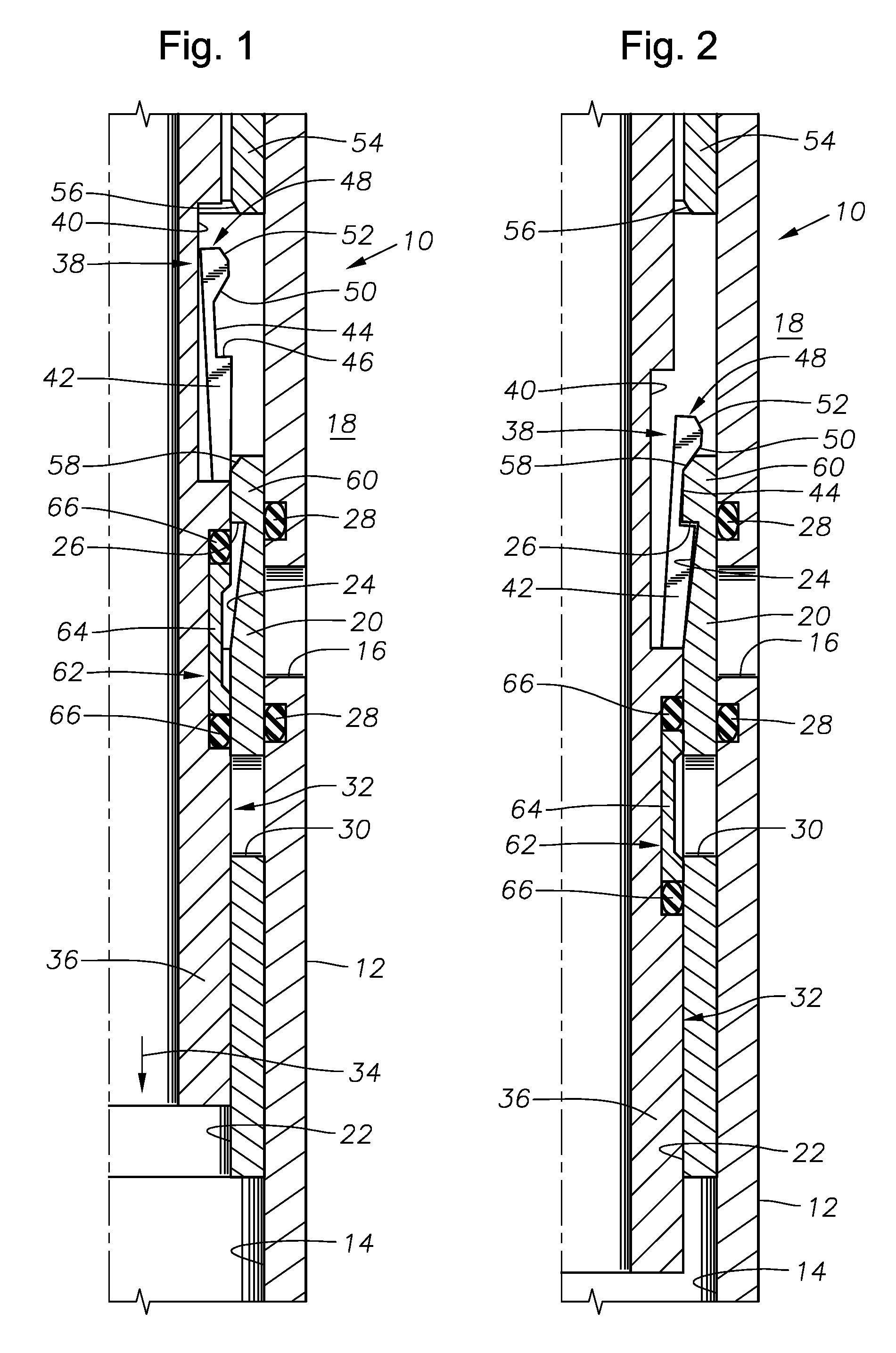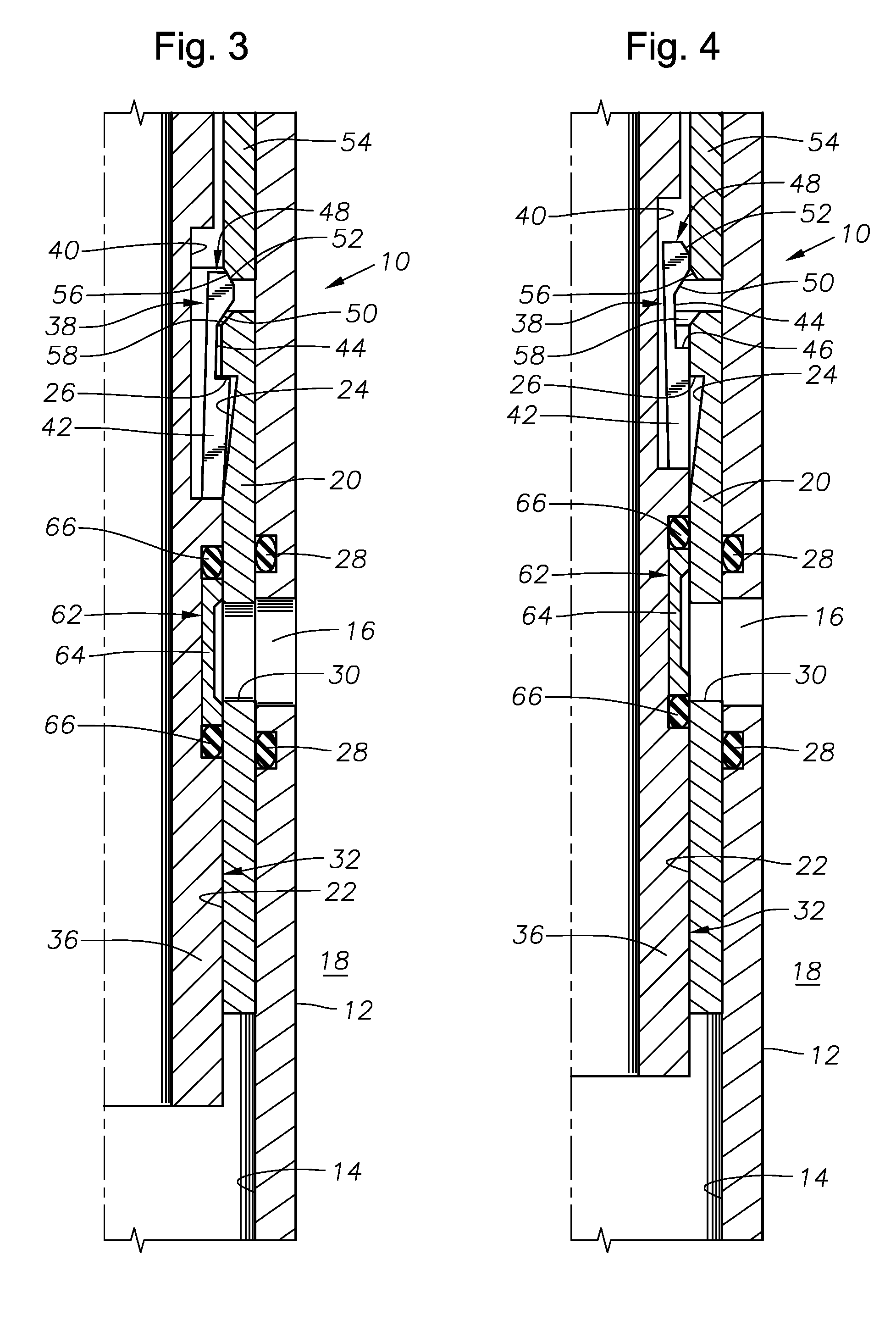High differential shifting tool
a shifting tool and high-discharge technology, applied in the direction of fluid removal, sealing/packing, borehole/well accessories, etc., can solve the problems of reducing the ability affecting the service life of the sleeve valve, so as to prevent significant stress and damage
- Summary
- Abstract
- Description
- Claims
- Application Information
AI Technical Summary
Benefits of technology
Problems solved by technology
Method used
Image
Examples
Embodiment Construction
[0023]FIG. 1 depicts an exemplary sliding sleeve valve 10 having an outer housing 12 that defines a central flowbore 14 along its length. The housing 12 of the sliding sleeve valve 10 is typically incorporated into a production tubing string of a type known in the art for hydrocarbon production and disposed within a hydrocarbon production wellbore. An outer radial fluid flow port 16 is disposed through the housing 12 to permit fluid communication between the annulus 18 surrounding the housing 12 and the flowbore 14. An interior sliding sleeve member 20 is disposed within the flowbore 14 of the housing 12. The sleeve member 20 is axially moveable within the flowbore 14 with respect to the housing 12. A central axial pathway 22 is defined within the sleeve member 20. It is noted that the upper axial end of the pathway 22 of the sleeve member 20 contains a radially enlarged recess 24 that provides a downwardly-facing stop shoulder 26.
[0024]Annular fluid seals 28 are located on each axi...
PUM
 Login to View More
Login to View More Abstract
Description
Claims
Application Information
 Login to View More
Login to View More - R&D
- Intellectual Property
- Life Sciences
- Materials
- Tech Scout
- Unparalleled Data Quality
- Higher Quality Content
- 60% Fewer Hallucinations
Browse by: Latest US Patents, China's latest patents, Technical Efficacy Thesaurus, Application Domain, Technology Topic, Popular Technical Reports.
© 2025 PatSnap. All rights reserved.Legal|Privacy policy|Modern Slavery Act Transparency Statement|Sitemap|About US| Contact US: help@patsnap.com



